Introductions:
The de Havilland DH.110 Sea Vixen is a British twin-engine, twin boom-tailed, two-seat, carrier-based fleet air-defence fighter flown by the Royal Navy's Fleet Air Arm from the 1950s to the early 1970s. The Sea Vixen was designed by the de Havilland Aircraft Company during the late 1940s at its Hatfield aircraft factory in Hertfordshire, developed from the company's earlier first generation jet fighters. It was later called the Hawker Siddeley Sea Vixen after de Havilland was absorbed by the Hawker Siddeley Corporation in 1960.
The Sea Vixen had the distinction of being the first British two-seat combat aircraft to achieve supersonic speed, albeit not in level flight. Operating from British aircraft carriers, it was used in combat over Tanganyika and over Yemen during the Aden Emergency. In 1972, the Sea Vixen was phased out in favour of the American-made McDonnell Douglas Phantom FG.1 interceptor. There have been no flying Sea Vixens since 2017.
In 1946, the de Havilland Aircraft Company conducted discussions with the British Admiralty on its requirements for a future jet-powered all-weather, radar-equipped fighter. From these talks, it became clear that the aircraft would need a crew of two to handle its radar and navigation equipment, as well as to fly the fighter, and that two engines were required for a safety factor over the ocean, and that swept wings were desirable. The fighter would also have a moderate wing loading for manoeuvrability at altitude and acceptable takeoff and landing performance from aircraft carriers. Highly effective wing flaps would be needed for landing and taking off.
de Havilland decided to pursue development of a design to meet the requirements of the British Royal Navy. The proposed aircraft, which was designated as the DH.110 by de Havilland, was a twin-engined all-weather fighter.
The DH.110 prototype WG236, in 1952
The design of the DH 110 used the twin-boom-tail design layout of the de Havilland Vampire and de Havilland Venom. It had an all-metal structure, 45-degree swept wings, and an armament of four 30 mm ADEN cannons. The DH 110 was to be powered by a pair of Rolls-Royce Avon turbojet engines, each capable of generating 7,500 lbf (33 kN) of thrust, which would allow the aircraft to become supersonic in a shallow dive. The DH 110 had the distinction of being the first British two-seat combat plane to achieve supersonic speed.
In January 1947, specifications N.40/46 and F.44/46 were issued by the British Air Ministry for similar night fighters to equip the Fleet Air Arm (FAA) and Royal Air Force (RAF). de Havilland submitted its proposal for the DH 110 to both services. As initially submitted the RAF version had Metrovick F.9 engines, although these would soon be known as the Armstrong Siddeley Sapphire when Metrovick sold its engine division.
In response, nine DH 110 prototypes were ordered for the RAF (together with four of the competing Gloster Javelin) and four prototypes for the Fleet Air Arm.
By early 1949 the DH.110 design was expected to be adaptable to fulfil four requirements: F4/48, F5/49 (a long range RAF fighter), N.40/46 (naval night fighter) and N.8/49 (naval strike aircraft). To this end the prototypes required would be three for F.4/48, four for common RAF and RN development, and two each for the other three roles and by July the authorities were ready to order the 13 prototypes.
In 1949, however, the Royal Navy decided to procure the de Havilland Sea Venom which, as a development of an existing aircraft, was cheaper, and would be available sooner to meet its immediate needs for a jet-powered night fighter to replace its fleet of piston-engined de Havilland Sea Hornets and Vought F4U Corsairs. The RAF decided to cut its order to two prototypes. Despite this setback, de Havilland elected to continue work on the DH 110 while trying to recapture official interest in the type.
On 26 September 1951, an initial prototype was completed and conducted its maiden flight from the Hatfield Aerodrome, flown by the test pilot John Cunningham. Early flight tests of the prototype demonstrated that the aircraft's performance exceeded expectations. By the following year, the prototype was regularly flying in excess of the speed of sound.
However, tragedy struck while the first prototype DH 110 (serial number WG236) was demonstrated at the Farnborough Airshow on 6 September 1952. Following a demonstration of its ability to break the sound barrier during a low level flight, the aircraft disintegrated and debris landed in the midst of spectators killing 31 people, including the crew of two, the test pilot John Derry and his flight-test observer, Tony Richards.
Subsequent investigation of the accident traced the failure to faulty design of the wing leading edge section ahead of the main spar. The design had been satisfactory for the earlier Vampire and Venom but not for the higher stresses induced by the rolling pull-out manoeuvre at 650 mph flown by the DH110 prototype at Farnborough. The leading edge skin, without the extra reinforcing structure that would be added later, buckled, which resulted in the outer portions of the swept-back wings being torn off (similar display routines had been flown on preceding days by the other prototype DH110 which had an aerodynamic fence providing external stiffening for the skin located precisely over the area where the buckling originated). The subsequent shift in the DH 110's centre of pressure caused the aircraft to pitch up, the cockpit and tail sections breaking away and the engines being torn from the airframe by the g loading. One of the engines hit an area crowded with spectators at the end of the runway, causing the majority of the deaths. Sixty other spectators were injured by debris from the cockpit landing close to the main spectator enclosures alongside the runway. This incident led to a restructuring of safety regulations for air shows in the UK, and no member of the public died as a result of a British airshow flight for more than 62 years, until the crash of a Hawker Hunter warbird killed 11 people during the Shoreham Air Show on 22 August 2015.
Weapons:
Firestreak missile
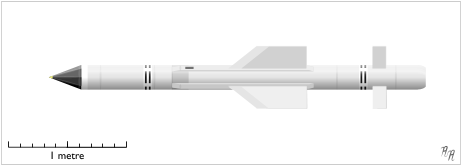
Redtop missile
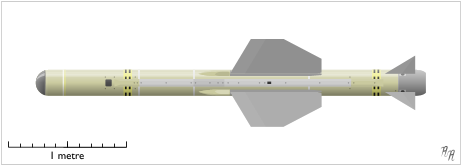
Instructions:
AG1: Detach Redtop missile
AG2: Detach Firestreak missile
AG3: Detach the drop tank
AG4: Arresting hook
Have fun!
Specifications
General Characteristics
- Created On iOS
- Wingspan 33.8ft (10.3m)
- Length 36.1ft (11.0m)
- Height 9.1ft (2.8m)
- Empty Weight 7,877lbs (3,573kg)
- Loaded Weight 10,167lbs (4,612kg)
Performance
- Power/Weight Ratio 6.63
- Wing Loading 28.6lbs/ft2 (139.5kg/m2)
- Wing Area 355.9ft2 (33.1m2)
- Drag Points 6523
Parts
- Number of Parts 236
- Control Surfaces 6
- Performance Cost 761

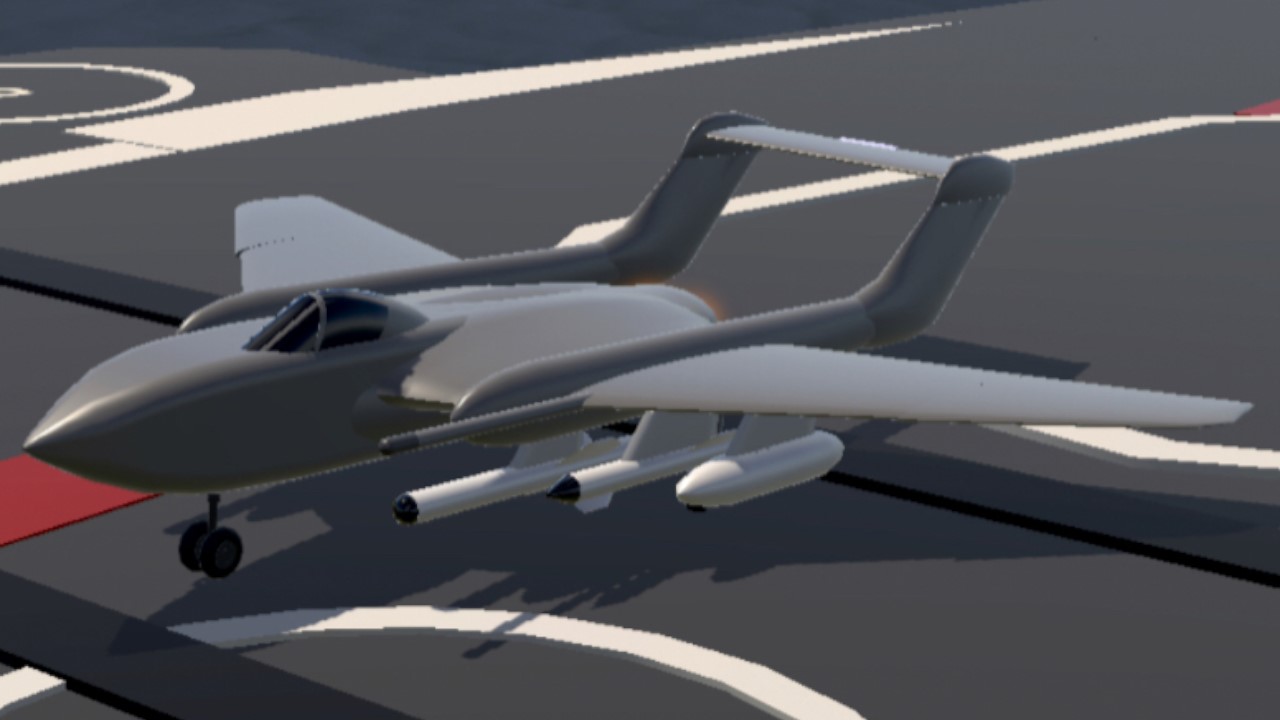
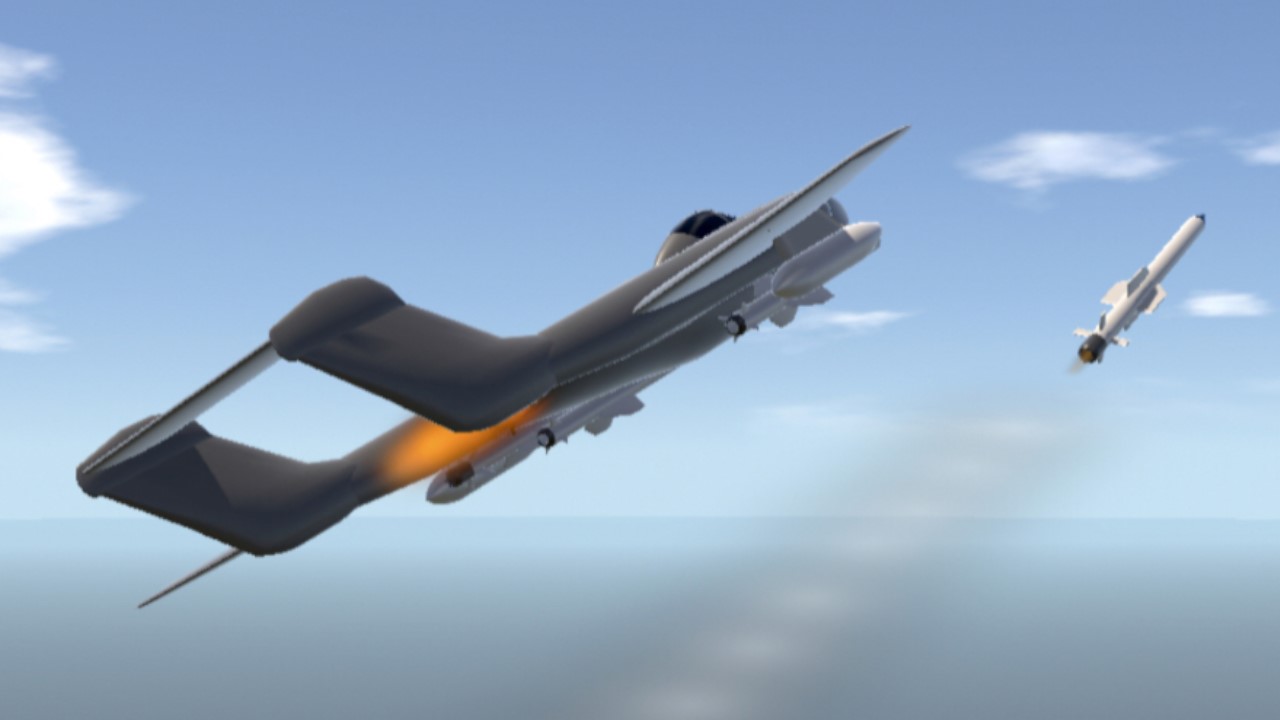
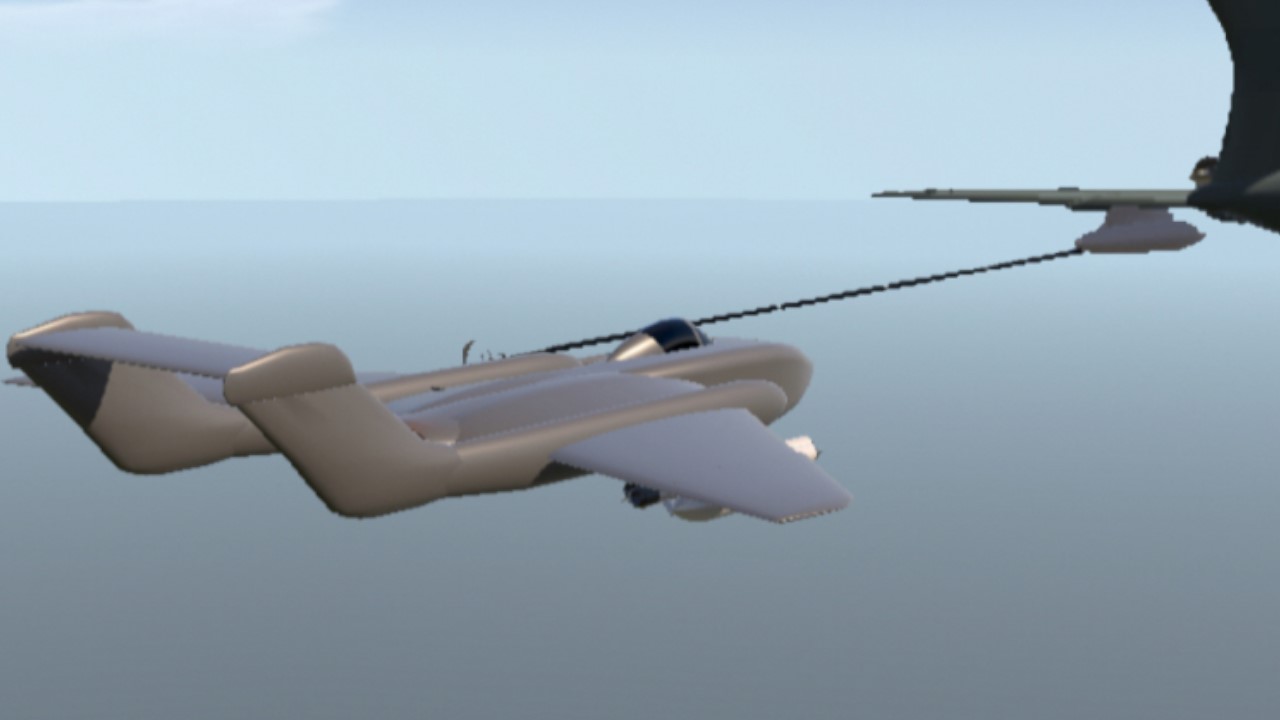
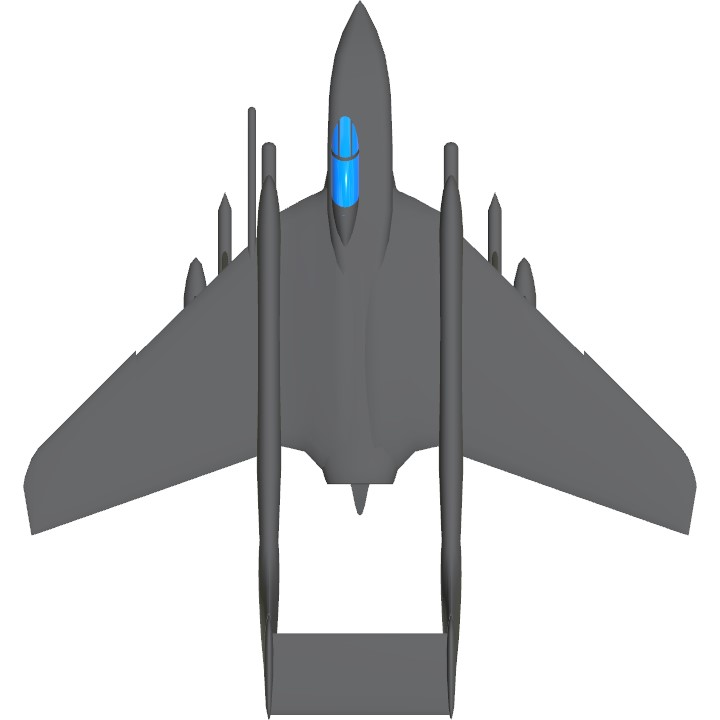
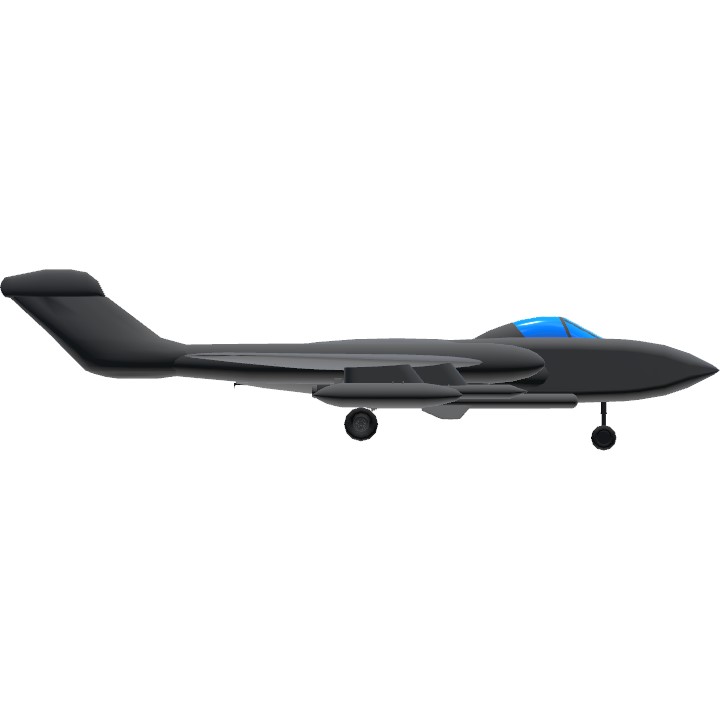
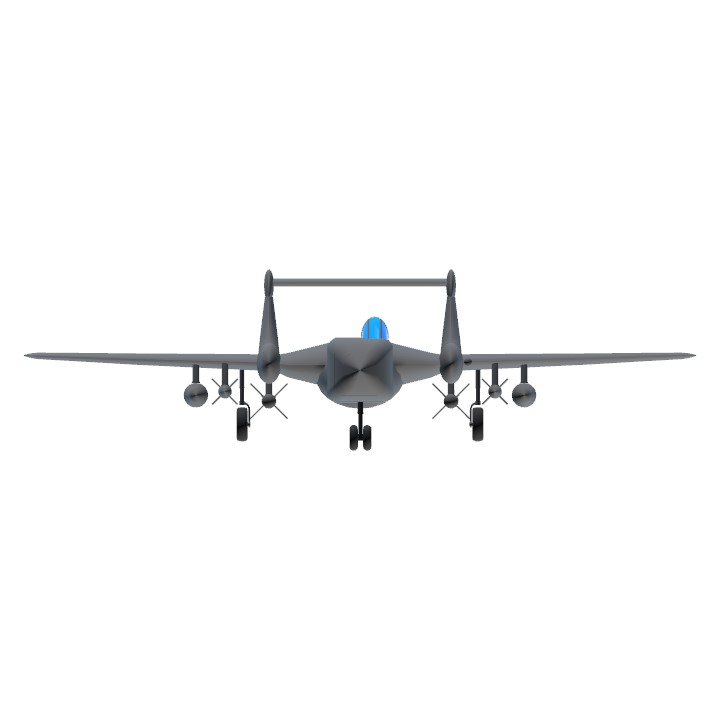
@Deepdark 嗯,确实
@1714 右侧还有一个埋在机体里的座舱,所以说那个位置也许要多铺一块玻璃
@1714 它本来设计就设这样的
驾驶舱是不是歪了